A Radiation-LESS Nuclear Station
|
Thesis Statement This thesis aims to investigate the potential that biological processes can bring to architecture in order to create an architectural structure that facilitates the diminishing, if not neutralization, of the inevitable adverse effects mankind has caused to the environment.
Description of contexts and key ideas driving the thesis [WHY] Since the 19th century, industrialization has transformed the way humans build and design. The invention of machinery and the simultaneous use of vast quantities of fossil fuels have opened the door to standardization and mass production. What comes with it, however, are detrimental environmental and social impacts, which have still yet to be resolved over the 200 years. 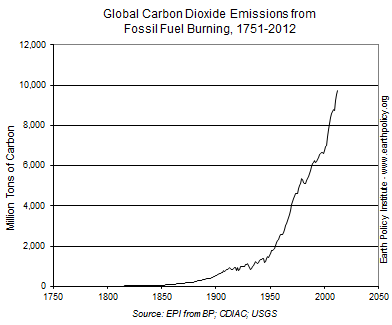 Earth Policy Institute. Global Carbon Dioxide Emissions from Fossil Fuel Burning. 2013. <https://www.earth-policy.org/indicators/C52/carbon_emissions_2013>
Currently, we are facing an energy crisis. Irrespective of the development of renewable energy, fossil fuels are still the main sources of energy because they are cheap and convenient and renewable energy sources are limited in the sense that their availability depends on certain conditions of place and time. It is quoted from the BP Statistical Review of World Energy 2016 that “Fossil fuels (including oil, coal and natural gas) accounted for a record of 87% of global primary energy consumption, nuclear energy accounted for 4.5% and finally hydroelectricity and renewables accounted for a record 8.5% (2016).” This produces a significant impact on the environment. At the same time, our extravagant reliance on fossil fuels will soon use up our reserves, and we will have no alternative energy sources substantial enough to satisfy our demands. Currently, we have already passed the tipping point of conventional sources of oil and gas.  BP Statistical Review of World Energy. World Primary Energy Consumption. 2016. <https://www.bp.com/content/dam/bp/pdf/energy-economics/statistical-review-2016/bp-statistical-review-of-world-energy-2016-full-report.pdf> 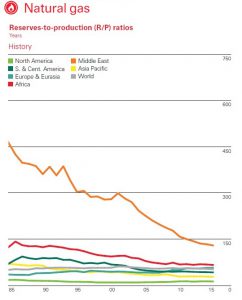 BP Statistical Review of World Energy. Natural Gas Reserves-to-Production Ratios. 2016. <https://www.bp.com/content/dam/bp/pdf/energy-economics/statistical-review-2016/bp-statistical-review-of-world-energy-2016-full-report.pdf> Cleaner energy sources, therefore, need to be more widely deployed. One popular substitute is nuclear power. As published in the Environmental Science and Technology by Kharecha and Hansen from NASA, “Aiming for these targets (to avoid devastating climate impacts) emphasizes the importance of retaining, and expanding the role of nuclear power, as well as energy efficiency improvements and renewables, in the near-term global energy supply”. Although nuclear power is an attractive alternative (since their cost of operation is low and generates little air pollution or greenhouse gas), it potentially causes more damage than the benefits it brings due to the radioactive impacts on the health of humans and the ecosystem in case of leakage and the long-term storage of nuclear wastes. However, if we are able to mitigate the radiation produced in a safe and effective way, it can come to play a more significant role as an energy solution.  Doris Kim Sung. Bloom Installation. 2011. <https://www.ted.com/talks/doris_kim_sung_metal_that_breathes>  Stephanie Bashir, Carlos Bausa Martinez, Hristo Kovachev. Chromatic Skins. 2014. <http://materiability.com/chromatic-skins/>
Present nuclear stations deal with radiation by employing successive barriers between the radioactive materials and the environment (Defense in Depth Concept). This safety mechanism has been developed from the earliest use of nuclear reactors in the 1950s. However, they rely on mechanical systems for cooling, which can result in unexpected power loss of machinery failure, and this is the main cause for past nuclear power plant breakdowns.  International Atomic Energy Agency. Defence in Depth Concept. 2014. <https://www.iaea.org/ns/tutorials/regcontrol/assess/assess3213.htm>
By incorporating biological insight in architectural design, we may be able to reduce the instabilities that may occur from mechanical operations and remediate environmental problems. At present, architectural designs derived from biomimicry ideas have started to take hold. Some projects even integrate photocatalyst technologies such as Bloom Installation and Chromatic Skins. They have all been successful in mitigating adverse impacts on the environment. Past examples are mostly dealing with conventional conditions such as sunlight and room temperature. This thesis aims to continue the exploration by using a biological organism in mitigating effects in a nuclear power plant.
Description of Project Intended to Test the Thesis Statement [WHAT] 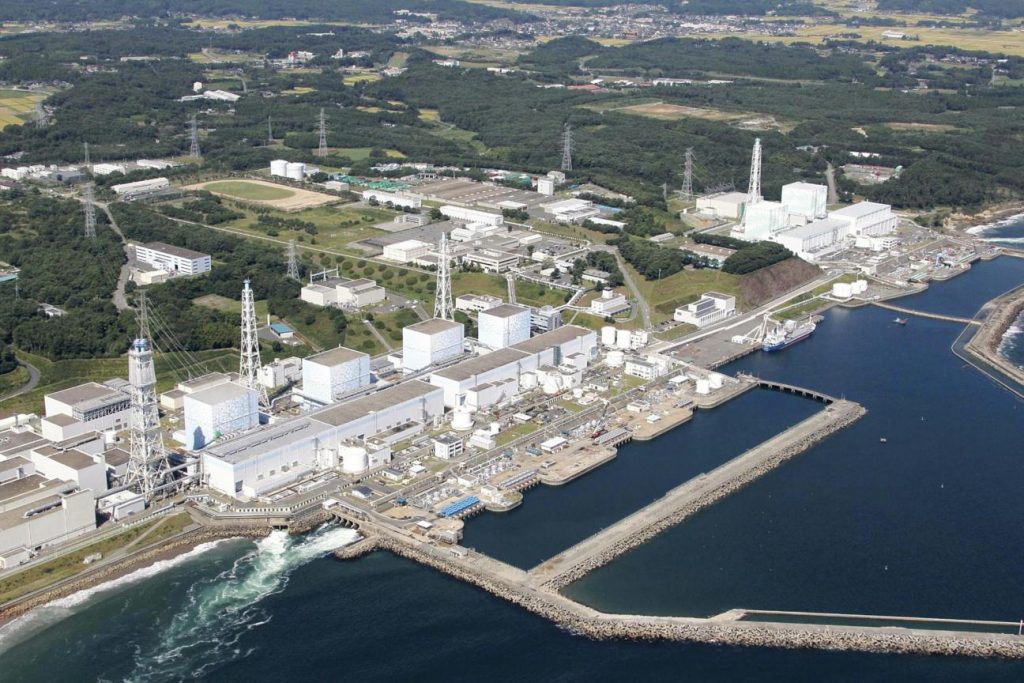 Aerial Photo of Fukushima Dai-ichi Nuclear Complex in Okumamachi, Northern Japan. Taken 18th September, 2010. <https://cryptome.org/eyeball/daiichi-npp2/daiichi-photos2.htm> 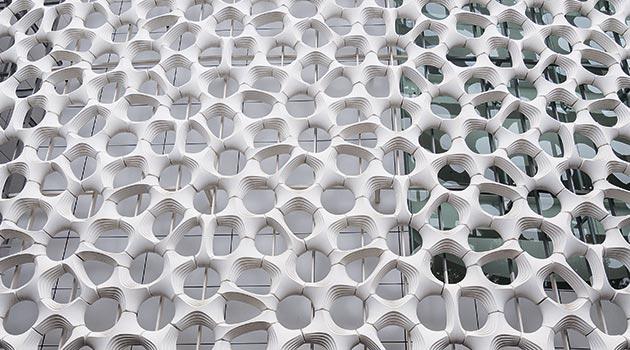 Elegant Embellishments. Prosolve370e. 2013. <https://prezi.com/v9xr9zise0mm/msa-prasentation-smog/>
Per research, it was found by scientists in post-nuclear sites after several months, that a type of fungi was not only able to survive the radiation emitted, but also digest and convert it into its own body cells for growth. This is because melanin develops inside these fungi when exposed to high levels of radiation, and the melanin changes their electron properties so that they are able to absorb the enormous flux of energy into their bodies. (http://journals.plos.org/plosone/article?id=10.1371/journal.pone.0000457#pone-0000457-t002) With this piece of knowledge, we may be able to design a nuclear station with walls and facades coated with these fungi, so that production of nuclear energy generation would not lead to an influx of radiation. The site I would like to work on is the original site of the Fukushima nuclear power plant, before it broke down in 2011 by re-imagining what the nuclear station could have been if the fungi had been incorporated in its design. Sited within the earthquake zone and near the Pacific Ocean, Fukushima is a suitable site to test out the implementation of new “technology” in nuclear energy generation. The key idea of this thesis is to cluster the “technology” of the radiotrophic fungi –ideas on increasing the surface area would drive the project to pack as much of the fungi onto a structure as possible in order to enhance the surface area of radiation absorption to ensure mitigation of radiation from the nuclear core. Then, this technology can be arranged within the systems of power plant to form multiple safety barriers, as required by the International Atomic Energy Agency in the safety control of nuclear power plants.
Methodological Processes/ Outline of Research/ Design Experiments [HOW] 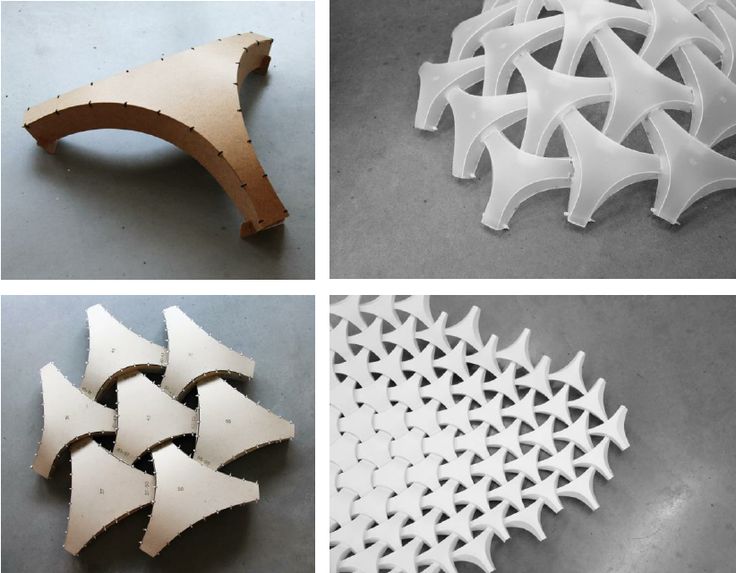 Stijn Brancart, Aline Vergauwen, Kelvin Roovers, Dimitri van der Bremt, Lars de Laet, Niels de Temmerman. Undalatus. 2015. <https://www.researchgate.net/figure/281201895_fig6_Figure-8-Physical-models-and-mock-ups-informed-the-geometric-model-of-the-Undulatus>
This thesis examines the potential of using the building structure as assistance in the integration of biological processes, in a modular way. This is tested through various prototyping of the design module and the wall. Preliminary Stage: Analysis the site conditions of Fukushima’s original site that could affect the nuclear power plant. Gain deeper understanding of radiation emissions; architectural design of nuclear power stations and the amount of radiation emitted per electricity produced enough to satisfy the grids into Japan. Stage 1: Gathering a catalogue of different surface enlargement ideas deployed in nature or other architectural precedents and find the possible test cases for development. Stage 2: Prototyping and experimentation of modules and how they would aggregate. Stage 3: Developing the details of the proposed structure and how they can be used in different systems of nuclear power plant. Stage 4: Refining all previous studies, research and design. Arranging the structures within the nuclear station.
Annotated Bibliography/ Precedents 01 THEORY
02 TECHNIQUES
03 RELATED PROJECTS
|